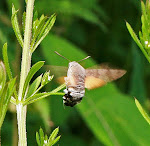
Date retrospective: April 2001:
Salvia veneris is a beautifully-flowered extremely narrow endemic restricted to an area of only a few square kilometres of ecologically-interesting terrain around Kythrea (Degirmenlìk) in northern Cyprus. The plant has rounded, flattened, thickly felted grey-green leaves, nearly all of them basal. The flowers have a pale sky-blue hood and a cream-yellow lower lip finely flecked with darker markings although I've also found a few plants with pure white flowers.



[White-flowered form]
The substrate where it grows comprises barren eroded sandstones and marls and plants are usually found on the slopes of small hummocks amongst minimal competition. Such open dry earth is very loose and friable and although quite deep-rooted, the plants (and the habitat) can be easily damaged by trampling. They occur in discrete local populations, often comprising only 10 to 30 individuals and can be surprisingly difficult to detect against the greyish soil.


[Several plants can be seen as grey patches scattered on the friable substrate]
Salvia veneris occurs in loose association with several other interesting plants which include the recently discovered Wiedemannia orientalis Fisch. & Mey. and the endemic Hedysarum cyprium Boiss.

[Wiedemannia orientalis]

[Hedysarum cyprium]
Salvia veneris was first discovered by the party of botanists led by the Englishman John Sibthorp during a tour of the eastern Mediterranean in 1787; a specimen which they collected is preserved in the Oxford University herbarium. In addition, a beautiful and accurate painting was made by Ferdinand Bauer, the renowned Austrian natural history artist, who accompanied Sibthorp's party and an engraving of this is reproduced in ‘Flora Graeca' published by James Smith in 1806. Unfortunately no locality details were given on the preserved specimen and so the precise place where it was first collected is uncertain but may have been a little to the west of the limited area from which it is now known.
For a detailed account of this plant and its close relatives, see the Karaca Arboretum Magazine Vol 7 part 1 (Foley 2003).
.jpg)






No comments:
Post a Comment